The canvas of a brand is colored by its visual elements, and graphic design is the brush that defines these elements. But should this brush be wielded by a seasoned artist or can it be managed in-house? Let’s dissect the advantages and challenges of hiring a professional graphic designer, shedding light on this pivotal decision.
Pros of Hiring a Graphic Designer
1. Expertise and Experience: Professional graphic designers don’t just create; they communicate. Through years of training, they’ve honed the ability to translate brand stories into visual narratives. Their designs are anchored in principles that resonate with audiences, ensuring that every visual element serves a purpose beyond mere aesthetics.
2. Time Efficiency: Diving into the world of graphic design without prior experience can be like navigating a maze without a map. Professionals, with their extensive toolkit and experience, can swiftly turn ideas into visual realities, allowing businesses to focus on what they do best.
3. Distinctive Brand Identity: In today’s saturated market, differentiation is gold. Professional designers craft unique designs that encapsulate brand essence, ensuring that your brand has a memorable identity that stands tall amidst competition.
4. Access to Cutting-Edge Tools: Design isn’t just about creativity; it’s also about technology. Professional designers come equipped with state-of-the-art software that enables refined designs, intricate details, and high-resolution outputs.
Cons of Hiring a Graphic Designer
1. Financial Investment: Quality comes at a price. Hiring seasoned designers or reputed design firms might strain the budgets of startups or small businesses. It’s crucial to evaluate the long-term ROI against the immediate costs.
2. Risk of Misaligned Visions: Sometimes, even the most detailed briefs can lead to outputs that don’t align with the brand’s vision. The iterative process of revisions can be time-consuming and, occasionally, frustrating.
3. Turnaround Times: While professionals are efficient, they’re also in demand. Depending on their workload, there might be longer waiting periods, which could clash with tight marketing schedules.
4. Reliance on External Entities: Outsourcing design means placing a part of your brand’s identity in external hands. If disagreements arise or if the designer is unavailable for updates, the brand could face challenges.
Conclusion
The decision to onboard a professional graphic designer is multifaceted. It hinges on the brand’s vision, budgetary constraints, and the importance placed on unique visual representation. While professionals bring undeniable expertise, the investment must be justified by the perceived value addition. Brands must introspect on their core needs, evaluate potential collaborations thoroughly, and remember that in the world of branding, visuals are not just decorations; they’re declarations.



